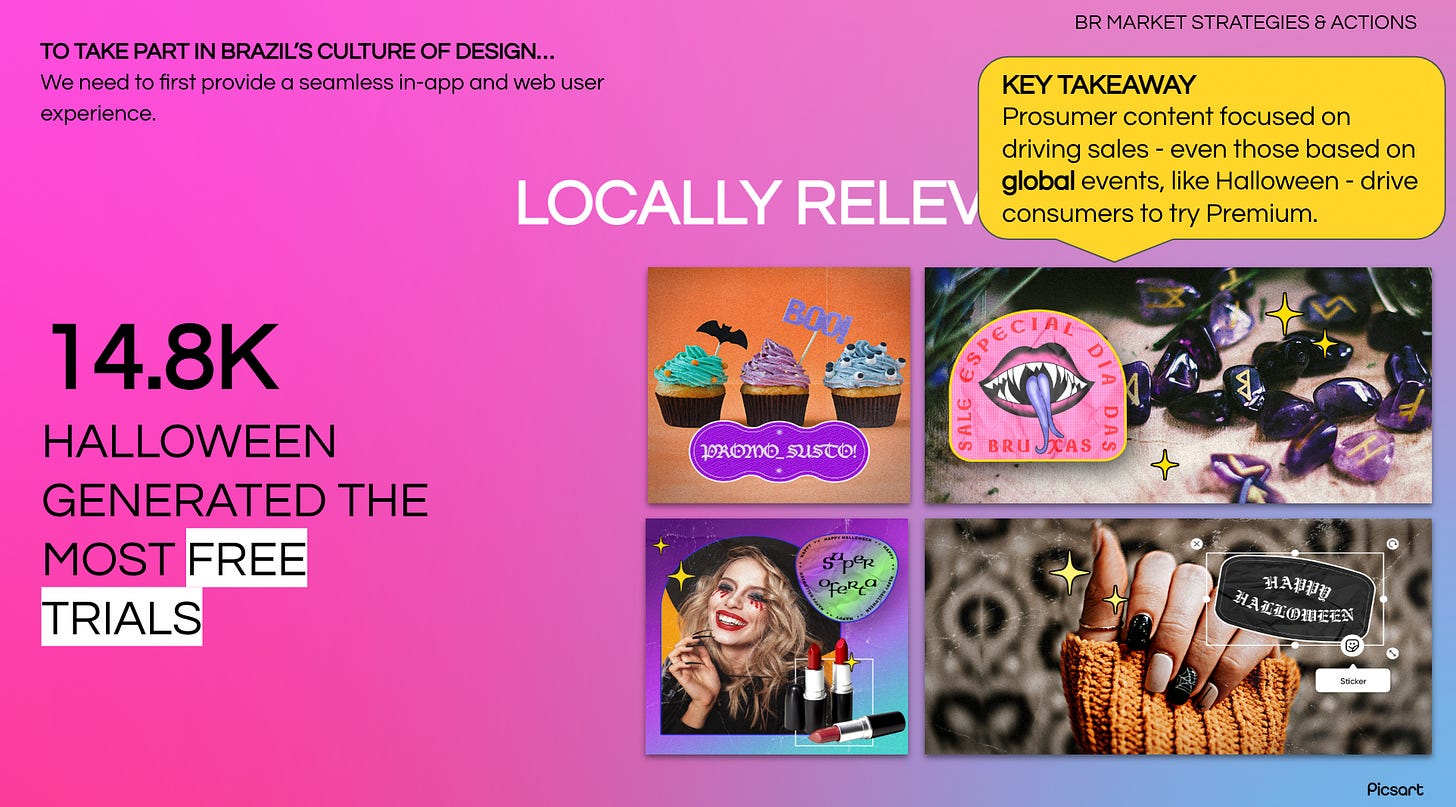PMF is not what you think it is
my experience with product market fit and the journey to get to it for Picsart, Rask AI and my consultancy Grow Global Tech.
When we hear product market fit, we immediately think customers and revenue growth. Numbers look great, customers seem to be happy and well, investors are too.
PMF or Product-market fit has been defined by its inventor as "a unique product offering that people desperately want."[1]
Truth is, it never felt like that neither in my B2C or B2B growth experience.
First, not necessarily people desperately want your specific product,
Second even if they want that desperately does not mean it’s not a short term interest or that they will buy your product.
So what is PMF then?
In my experience it’s not just the acquisition or revenue growth, it’s retention.
You solve a problem for a specific customer type so well, that they are ready to come to you all over and over again or bring their friends.
And here is my experience with PMF and how it unfolded for Picsart, Rask AI and my consultancy Grow Global Tech.
Case Number 1. Picsart in Brazil
Back in 2021 and 2022 we were expanding Picsart’s presence in Brazil.
Then there was some effort like localizing the app and website, translating global campaigns and focus on ASO. Yet both installs and revenue were not growing.
As first step we started introducing local content, moved from “translation first” to tool and also did plenty of ASO experiments. Did we see growth? Yes, it spiked! number of times for local holidays, major ASO updates and even with some trendy AI content and tools. But we were a) heavily dependent on seasonality and b) on our customer’s perception of value of quick editing tools (once trend was gone, numbers sinked).
After taking few takes on segmenting audience in Brazil and also talking to local users we figured that highest retaining (yet smallest for then) group was the small business or solopreneur /freelancers group. So we decided to experiment - and instead of doing trending halloween campaigns with cool AI masks we started doing content, marketing and all of our push around “using Halloween to boost your sales”. It was our most successful content campaign ever generating ±15’000 trials of premium subscription.
We then expanded to other channels and saw that once we provide actual value to this customer group, revenue kept growing.
In fact unlike the US then, where our focus was on trendy social media editing and content creators, the potential in Brazil and our true PMF signals were coming from a different group of users.
Case Number 2. Hockey stick growth, yet no PMF just yet.
Rask AI thought they had a PMF with creators because they had growing number of sign-ups - reached 1 mln in 6 months! Also complemented with hockey stick huge revenue growth… but in fact they had what we called with them a “false PMF”.
Why? Customer retention was a problem. Content creators and solopreneurs were not retaining well (although they were early adopters and fans) and targeting companies who wanted international expansion showed interest at first, even payments and rather large volumes, but inconsistent usage.
They simply did not have proper localization systems in place and this was an ad hoc initiative, which was hard to scale. So although customers count was growing, the problem Rask AI solved for them was not so essential for business. So they decided to pivot again.
If you are curious to hear more about the case with their team - watch our free webinar here.
Case Number 3. The early sign vs actual need
Last but not least. I thought in my consulting business I had a product market fit. For good 6 months. Up until I realized I did not.
Here is the story:
1. I launched my consulting practice back in July 2023, I was relying on network and few Linkedin posts, and network effect worked.
2. by November 2023 I had 5 clients in parallel and few requests to work on Linkedin, couple of people helping me on projects and we were generating 30-40k MRR on average month.
3. by Spring 2024 it slowed down a lot (and I was burned out with amount of work), as I had to deliver lots of projects and almost stopped posting on linkedin or refining my offer.
4. Whole summer I spent analyzing, posting more content, trying to scale. And failed all over and over again.
5. And after in depth customer research this fall I realized that my offering was:
a) not solving a real problem for founders (growth is a problem, but it’s way too broad plus most don’t believe in fractional talent or consultants)
b) not needed in Swiss market (where I live), as most enterpeneurs here don’t want to grow globally or scale their business with growth experimentation.
c) not scalable with current GTM motion, as for my service business I relied only on inbound traffic from Linkedin and recommendations, yet I did not invest in customer service, referral programs or did not actively do decent expert content or share case studies.
Summing it all up.
Truth is PMF from my experience can be signaled by revenue, sign-ups, but most importantly customer retention (repeatable usage and payment).
Three criteria:
You acquire customers and they retain (usage and revenue)
Your product solves an important problem for your customer (and they say it’s essential for their business or personal - situation) and that results in fair share of WOM.
GTM motion is scaleable and you have at least one channel working.
There is a great article from Lenny on PMF and how long it takes companies to reach it in B2B. If you have not read it yet, strongly suggest to check it out.
And curious to hear your experience - how do you define Product-Market-Fit?






